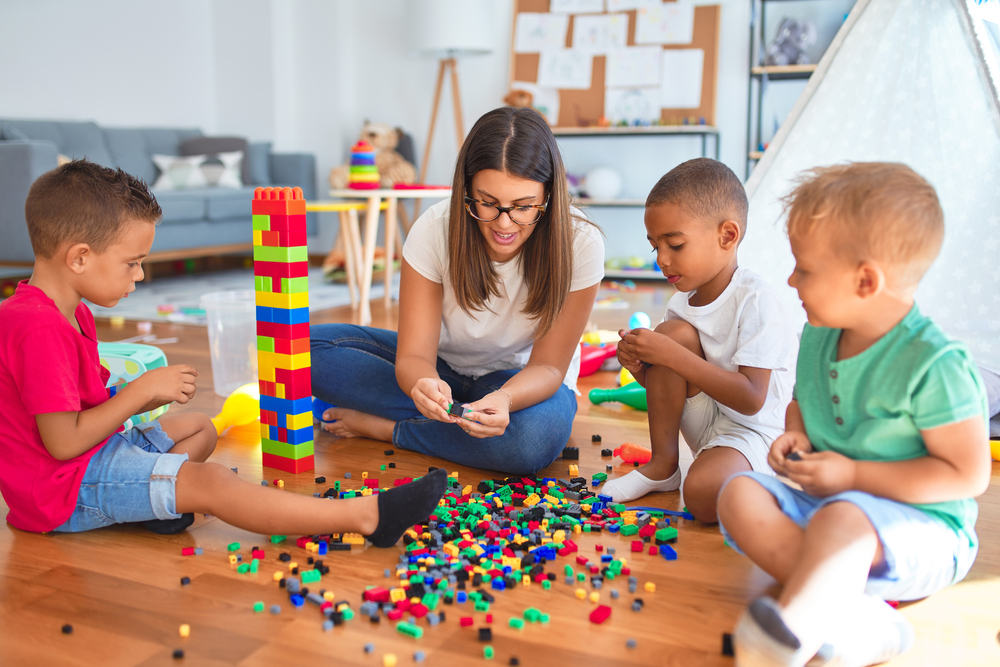We probably don’t want to add toy cleaning to our To-Do-List, but as with most cleaning task it actually prevents more work latter on. Clean toys reduce the chance of illness in children. This is especially important in childcare centre cleaning, where there are many children playing with the same toy.
Understanding the Difference Between Cleaning and Disinfecting
Cleaning and disinfecting are two distinct but equally important processes. Cleaning involves removing dirt, dust, and debris from surfaces. Disinfecting, on the other hand, involves killing or reducing the number of germs on a surface. Both processes are crucial in maintaining a safe play environment for children.
Sorting and Categorizing Toys
Before starting the cleaning process, it’s important to sort and categorize toys based on their material and use. Toys made of different materials (plastics, wood, cloth) may require different cleaning methods. Additionally, toys that are frequently handled or put in mouths should be prioritized for more frequent cleaning and disinfecting.
Cleaning Toys Made of Different Materials
Plastic Toys:
Wash plastic toys with warm soapy water using a mild detergent.
Use a soft brush or cloth to scrub any hard-to-reach spots.
Rinse thoroughly and allow to air dry.
Wooden Toys:
Wipe wooden toys with a damp cloth and mild soap.
Avoid soaking or submerging wooden toys to prevent damage.
Dry immediately after cleaning to prevent warping or cracking. Use a dry towel to remove surface dampness. Then you can use an electric fan to dry, or leave them in the sun. Often air drying is enough.
Fabric Toys:
Check the care label for washing instructions. If suitable, machine wash in hot water with a gentle detergent.
For non-machine washable fabric toys, spot clean with a cloth dipped in warm soapy water.
Soft and Stuffed Toys:
Launder soft toys in hot water and dry them thoroughly.
If machine washing is not possible, consider using a fabric-safe disinfectant spray.
Many soft toys can be dried on the clothesline, but this will cause fading over time.
Disinfecting Toys
After cleaning, it’s crucial to disinfect toys to eliminate any remaining germs. Choose an appropriate disinfectant that is safe for children and effective against a wide range of germs. Follow the manufacturer’s instructions for dilution ratios and contact times.
Frequency of Cleaning and Disinfecting
Toys in childcare centres should be cleaned and disinfected on a regular basis. For frequently touched toys, especially those put in mouths, daily cleaning and disinfected is needed. Less frequently used toys can be cleaned and disinfected on a weekly basis.
Storage and Organization
Proper storage and organization of toys can help minimize contamination and make the cleaning process more manageable. Consider using labelled bins or containers to keep toys separated and easy to access. Frequently cleaned toy can be kept separate, so they will not infect other toys. Make sure toys are dry before storage, as wet surfaces will encourage germs.
Childcare Centre Cleaning Sydney
Maintaining a clean and safe play environment is essential in childcare centres. Cleaning and disinfection of children’s toys is a critical step in preventing the spread of germs and illnesses. Arranging regular childcare centre cleaning will save time and prevent potential health hazard.
Information Disclaimer
The content of this article is meant for informational purposes only and should not be considered a source of professional advice, recommendations, or endorsements. It is not a substitute for seeking expert guidance or making well-informed decisions based on individual circumstances. Although we strive for accuracy and reliability, we cannot guarantee the information's completeness or suitability for all situations. Readers are urged to verify facts, consult experts, and consider their own context before taking actions or decisions based on this content. No warranties, explicit or implied, are provided regarding the accuracy, timeliness, or completeness of the presented information. Relying on this information is at the reader's own discretion and risk. We encourage readers to consult relevant professionals or experts for advice tailored to their specific needs. Neither the author, publisher, nor any affiliated parties will be held responsible for errors, omissions, or damages resulting from the use or reliance on the information in this article.

